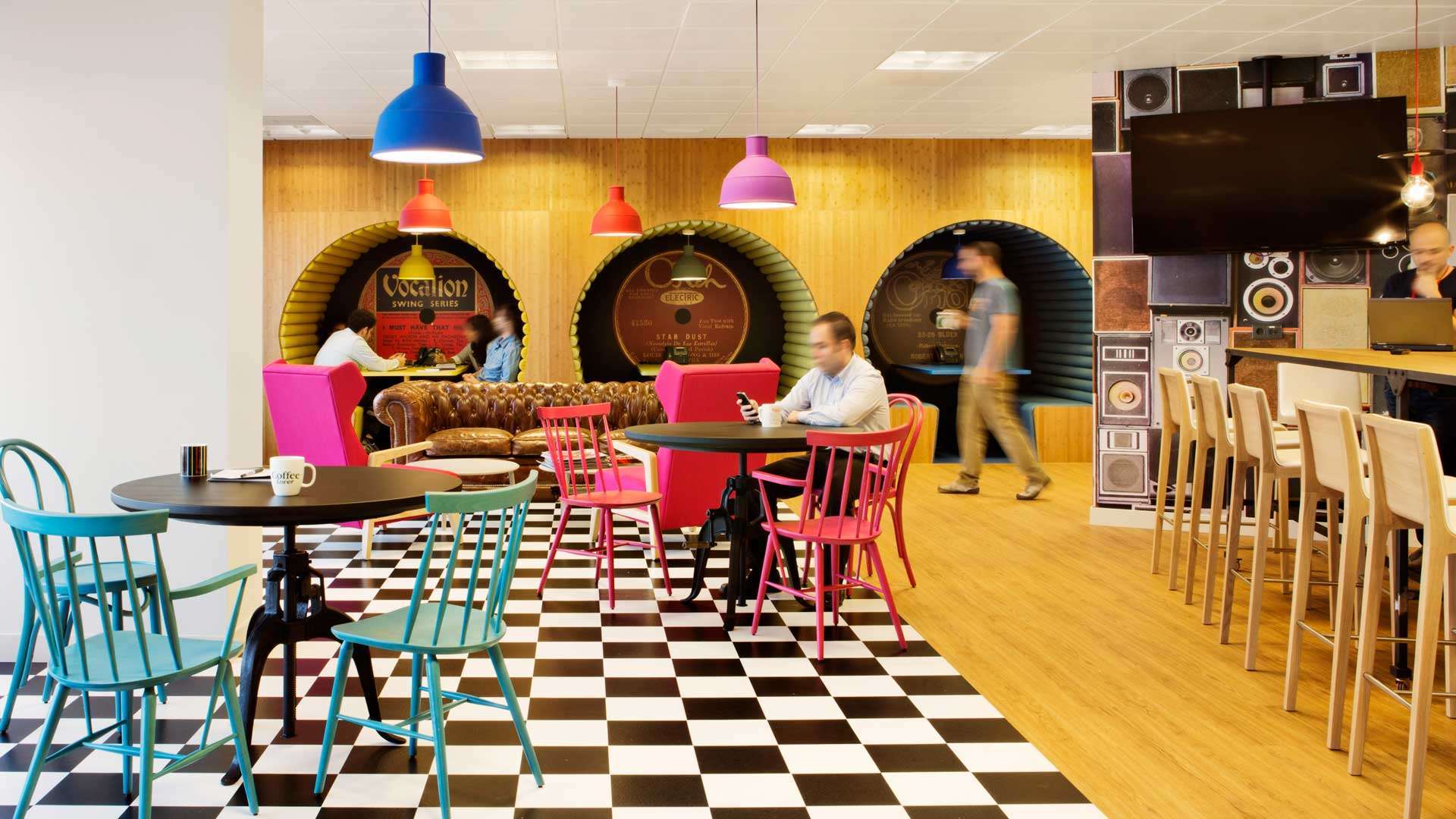Experience design: putting people at the centre
The style of our working lives is undergoing fundamental changes. It is faster-paced, there is less formality, more local reference and a stronger social agenda than ever before. And these human scale factors are connecting to have an impact on the traditional view of the office, where the experience is gaining in importance. Francesca Jack explains how we are starting to look at people as consumers of the office.
As work becomes more social, our expectations of jobs are changing. We are looking for a greater sense of meaning. Reflecting the changing mindsets of workers aged up to their mid 30s, the so-called Generation Y and Millennials. AECOM research has revealed trends instrumental in moving this change along. Leading the changes in the workplace and worker expectations are those working in the Technology, Media and Telecommunications sector and while the trends are often seen as synonymous with this sector, they are already influencing others.
By the year 2020, an entire generation will have grown up in a digital world. Computers, social networks, messaging, the internet… all are second nature to this group. This familiarity with technology and the desire to remain constantly connected with large networks of family members, friends and business contacts will transform not just how we consume, but how we work. The idea of separating our work life from our personal life is diminishing; instead everything is rolled together as just life.
In a recent CIO Magazine survey, 87 per cent of respondents identified productivity benefits as the top driver for their mobile technology investments. This seamless integration of technology into all corners of our lives also means that transitions between home and work will be a lot smoother, resulting in less waste of productive time, but also simultaneously blurring the lines between activities we do for ourselves and those we do for work.
“Mobile technology has revolutionised how and where work is done. Instead of going to work, work can now follow people, wherever and whenever they choose. The implications will continue to be enormous for individuals, organisations, offices and cities.”
The direction for changes in office space cannot be singular, but must accommodate variety; people seek places to meet colleagues, meet friends, work alone, eat, relax and learn. This sounds more like a city than an office and that is the challenge for an organisation. The days of employers monitoring Facebook usage during ‘working hours’ are numbered; smart leaders are empowering people and managing through output not by being present.
If work has left the building for many, why do we continue to focus on the office typology as the work hub? Work is something that happens at a city and regional level, and operates across global geographies.
However, most people must work from somewhere and many organisations do still prefer to bring their people together. This is often part of a deliberate strategy, encouraging people to form a cohesive culture, enabling staff to be managed more easily, empowering collaboration and providing access to specialist technology.

“In addition to the growing proportion of space dedicated to socialising, there are also the implications of providing additional services. On‑site food, shopping, personal care, and health and fitness are becoming increasingly common.”
It’s all in the experience
Experience design is about putting people at the heart of the workplace or design project. It starts with the individual and works out from there. This is about building a holistic system of services, technology and physical places that enables people to be more productive. Many organisations do not have a strong link between facilities management, IT and HR, and this results in a disconnected, or over-complicated, experience for the individual. Putting the experience at the centre of the design will force the systems and technologies to work more closely together.
The workplace is becoming an increasingly social experience. The younger generations particularly prioritise the social aspects of work. We see the knock-on effect in office buildings, with an increasing proportion of interior workspaces given over to social and community areas, places for people to come together to collaborate, eat and play.
In current flexible-working environments around 40 per cent of the floor plate can be given over to spaces other than desks. In a headquarters building this space allocation figure can be even higher, more than 50 per cent.
In addition to the growing proportion of space dedicated to socialising, there are also the implications of providing additional services. On-site food, shopping, personal care, and health and fitness are becoming increasingly common. Our research shows that few organisations are keeping up with the pace of change and they are not managing these facilities with the employee at the centre. We suggest that facilities managers and others with a brief to shape offices for a more productive future need to keep open eyes and an open mind. Our vision is of a workplace that’s much more like a hotel or city quarter in terms of the variety of services provided for the employee. The 9-to-5, desk-based drudgery will be consigned to history.






